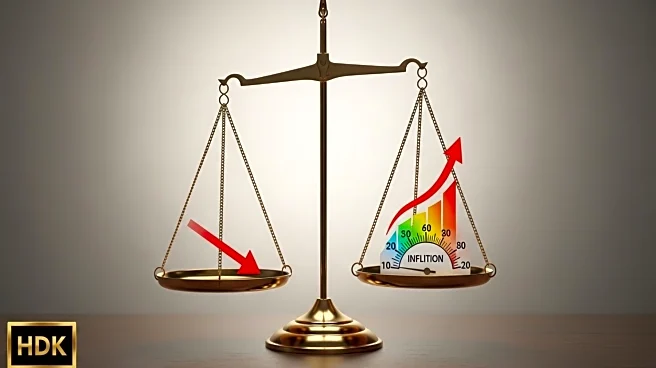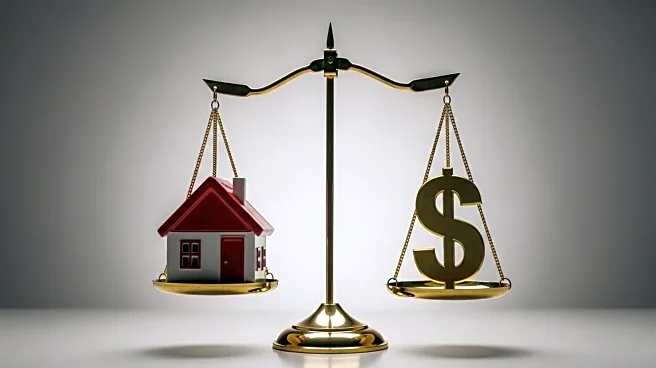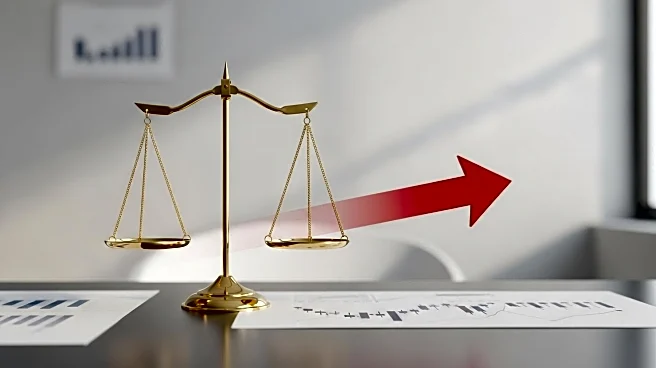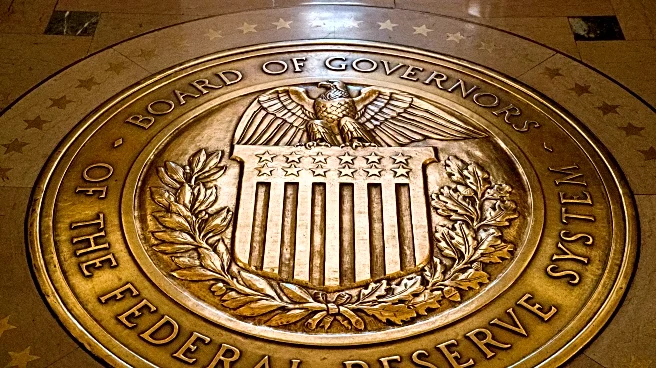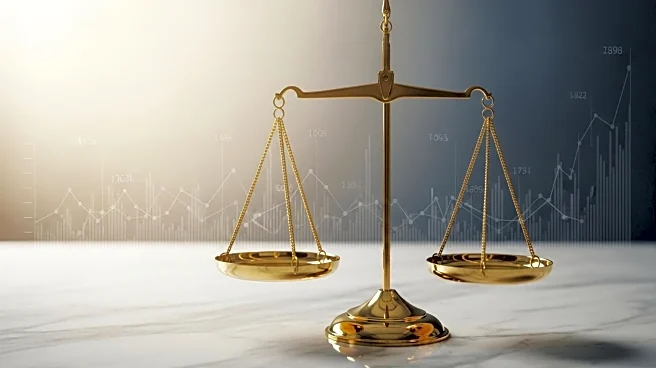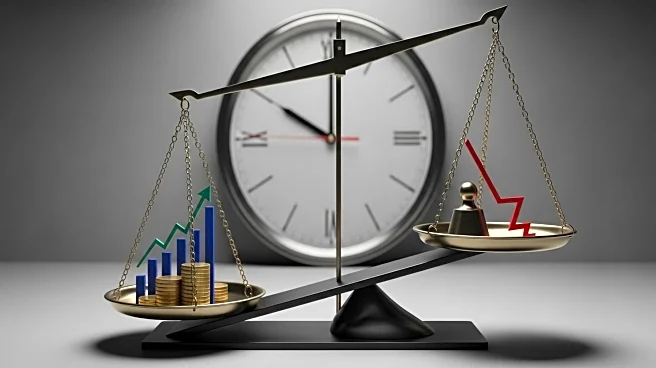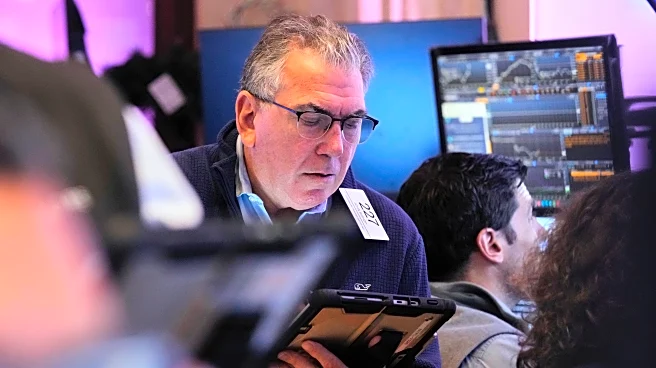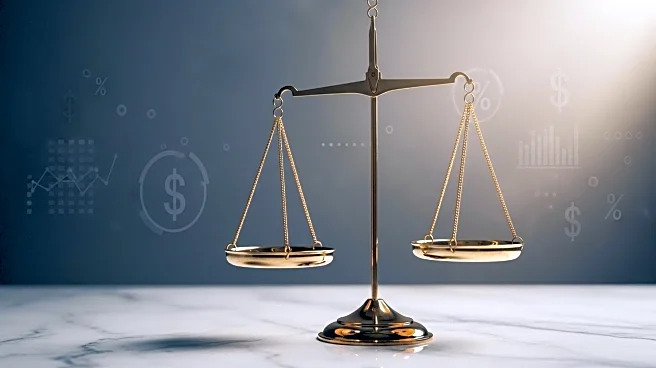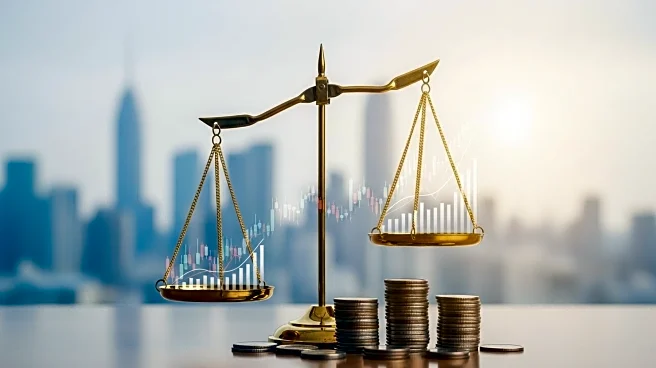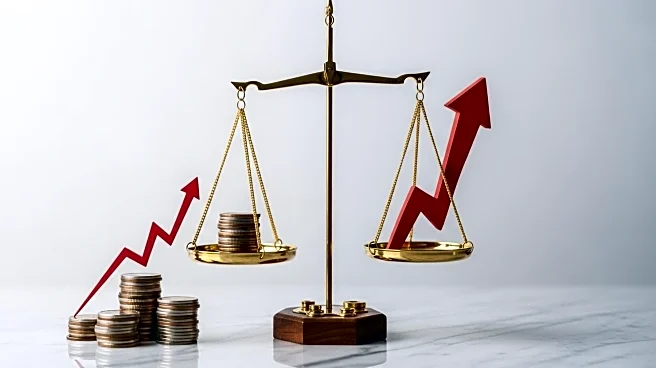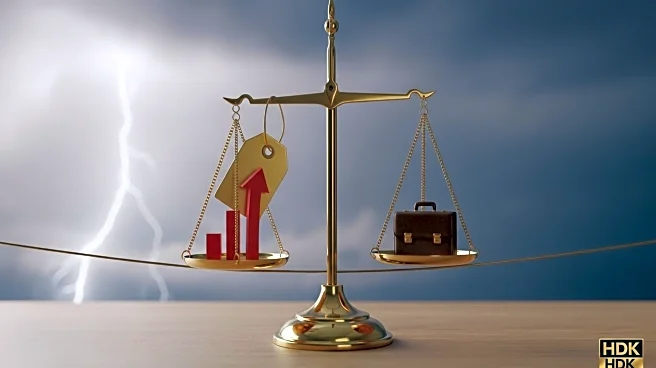What is the story about?
What's Happening?
Consumer confidence in the United States has declined for the second consecutive month, driven by concerns over job security, inflation, and the broader economic outlook. According to the University of Michigan, consumer sentiment has been negatively impacted by trade policies, with 60% of consumers mentioning tariffs in surveys. Inflation expectations have risen, with consumers anticipating a 4.8% increase over the next year. The Bureau of Labor Statistics reported a significant revision in job growth, indicating a potential reduction of 911,000 jobs over the past year. The Labor Department noted a rise in unemployment to 4.3% in August, further complicating the economic landscape. The Federal Reserve is expected to shift its focus from inflation risks to labor market concerns, potentially adjusting interest rates to address these challenges.
Why It's Important?
The decline in consumer confidence and rising inflation pose significant challenges for the U.S. economy. As consumers become more cautious, spending may decrease, impacting various industries and economic growth. The Federal Reserve's potential interest rate adjustments could influence borrowing costs, affecting businesses and consumers alike. The ongoing impact of tariffs on prices adds complexity to the economic environment, potentially leading to prolonged inflationary pressures. Policymakers must balance efforts to stabilize prices with the need to support employment, as the labor market shows signs of weakening. The outcome of these economic dynamics will have broad implications for public policy and economic stakeholders.
What's Next?
The Federal Reserve is anticipated to adjust the federal funds rate, possibly reducing it by a quarter percentage point, to address labor market concerns. Fed Chair Jerome Powell is expected to emphasize the shift in focus from inflation to employment during upcoming press conferences. The persistence of import tax-related price shocks may continue to influence inflation rates, requiring ongoing monitoring and policy adjustments. Stakeholders, including businesses and consumers, will be closely watching these developments, as they could impact economic stability and growth prospects.
AI Generated Content
Do you find this article useful?
